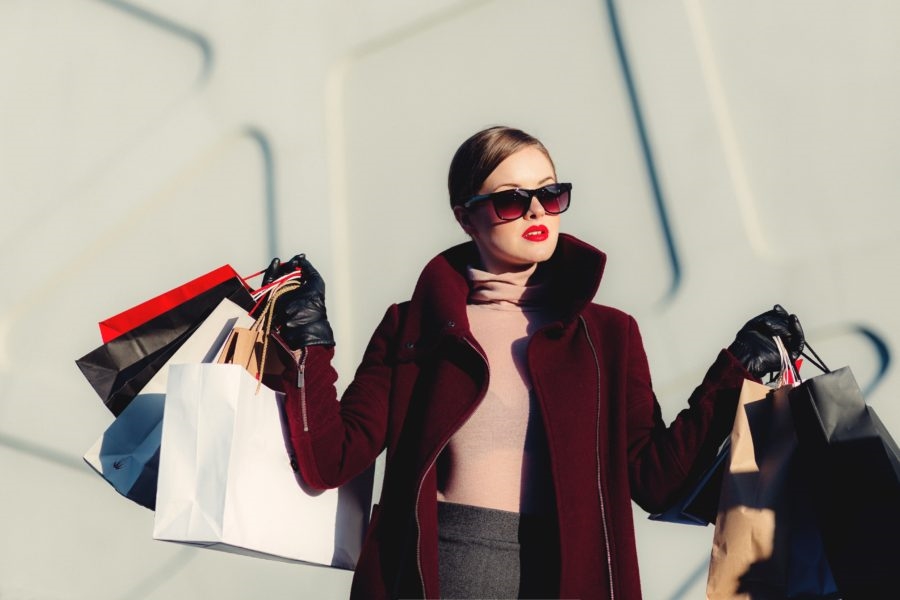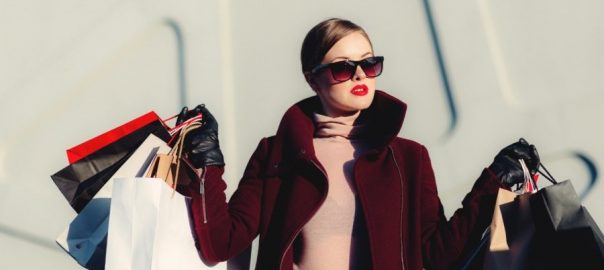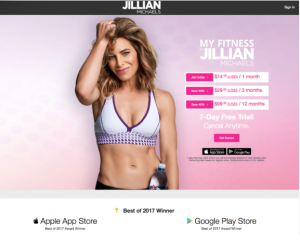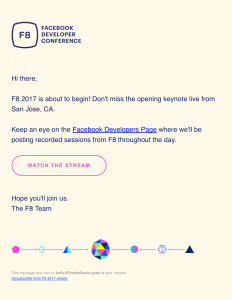— January 25, 2019

Photo by freestocks.org on Unsplash
Don’t get left behind. Luxury retailers need to understand the latest trends to succeed in 2019…
With online sales of luxury brands expected to reach $ 70 billion globally by 2025. Transitioning from a physical store to positioning a luxury brand online is key for growth from 2019 onwards. And, digital marketing should be at the core of luxury retail brands.
Luxury retail has typically been associated with physical stores. But, due to a shift in the market landscape, eCommerce plays a greater role in the sales of luxury goods. The biggest drivers of this change are the consumers: Millennials and generation Z make up 30% of the eCommerce market, making them the most important audience to attract. This number is expected to increase to 40% by 2025.
As the eCommerce space shifts, millennials and generation Z are adapting to new technologies in order to shop online. So for eCommerce brands to stand out and reach this audience, they need to adapt to new retail technology as it evolves.
It is critical for luxury eCommerce managers and CEOs to keep up with the eCommerce luxury landscape. In particular, luxury retailers need to stay up to date with digital trends as our technology and consumer mindsets evolve year on year.
Unlike low and mid-market brands, this shift towards eCommerce does not mean luxury brands are closing their stores. Customers at the high-end of the market still value a personalised in-store shopping experience, so eCommerce is used as an addition to, and not a replacement of, brick and mortar stores.
Because of this, the strategies taken to build a digital presence are quite different from eCommerce businesses that aren’t selling luxury goods. To help you understand the directions luxury eCommerce will take, we’ve compiled a list of trends you’ll be seeing in 2019:
Technology will further enhance the personalised shopping experience
Technology is driving the switch to personalisation online in the luxury market. It has traditionally been delivered by in-store personal shoppers. However recent advancements in Artificial Intelligence (AI) and Augmented Reality (AR) have enormous benefits for luxury brands, which we’ll see more of in 2019.
Artificial Intelligence (AI) is already being used to improve the customer experience and meet their expectations. Customers are beginning to rely on what their devices, (smartphone or tablet) suggest they should buy when they make purchasing decisions.
AI is constantly being improved to provide more personalised recommendations that predict what shoppers are likely to buy in order to enhance their overall experience. AI is doing this by giving developers the opportunity to create tools and software which allows eCommerce brands to connect marketing channels and CRM software (customer relationship management), to promotions on your website. This will help you to provide a more personalised shopping experience to your customers, tailoring promotions according to where customers are on their customer journey.
Chatbots, also driven by AI, go one step further by providing a richer, interactive experience that is completely automated and importantly, scalable. Chatbots can help your online shoppers with a number of tasks including answering queries about a product, performing stock checks on local stores, or advising on the best product for the customer’s needs. Luxury brands Estee Lauder and LVHM recently had success with using chatbots to drive sales, so we can expect more luxury brands to take notice and follow suit into 2019.
Augmented Reality (AR) is another technology to look out for. It was developed after Virtual Reality (VR), as a better means of reaching a multitude of markets. While users love the immersive experience of VR, the high price of VR headsets and exclusivity to the gaming market means they’re an impractical marketing tool.
Augmented reality (AR) is an exciting alternative, and the vast majority of the consumer base already have the tools to receive AR experiences in the form of a smartphone or tablet. The technology works by integrating the real environment, as picked up by a camera on your device, and overlaying it with digital information such as text or a 3D model. Luxury brand Jazmin Chebar are using 3D images to highlight the quality and materials of their high-end products.
Augmented reality can even be used to simulate a store-like experience at home or on the go, allowing consumers to try products at home before they make a purchase.
AR used in the luxury world
AR can also be used to enhance the in-store experience. In the luxury beauty world, it is already being used to match a customer’s skin complexion to makeup shades and hair colours, and display matching choices on the customers face in real time via a screen.
Moving forward, AR will extend beyond just beauty and will be seen across the luxury market. Look out for 3D product models featuring customisable swatches or engravings, available both online and in-store, building on the experience of personal interaction that was, until recently, only available to in-store shoppers.
Brands will flock to China
There’s no better example of a nation drawn to luxury than China. Their growing middle class has led to a boom in the luxury market. As of January 2018, China accounts for 32% of global luxury goods purchases with a market size of $ 25 billion.
Expect to see a rise in the number of luxury brands flocking to sell to the Chinese market in 2019. If you want your luxury eCommerce brand to reap the benefits of the Chinese luxury market, you will need to tailor a digital strategy specific to Chinese shopping habits.
Chinese consumers use apps such as WeChat far more heavily than internet browsers, and brands will follow this trend, partnering with existing apps to maximise their exposure on platforms they already trust. Luxury brands such as Dior and Armani run campaigns specifically for connecting with their Chinese audience using WeChat.
Stories will come alive online
Successful luxury brands have always told stories to bring in customers. And, these stories used exclusivity to make their customers feel part of an elite club.
Many luxury brands have been hesitant to branch out online, in fear of sacrificing that same sense of exclusivity. However, luxury brands should not be hesitant because what worked in the past, will not work in today’s market, where 80% of all luxury sales are influenced by what the customer sees online.
Luxury brands will miss out on a mass variety of new and exciting ways to share a compelling story, digitally if they do not make the shift.
Digital video storytelling
Video storytelling is a popular medium for eCommerce brands to share stories. Video stories are a great way to focus on the brand message in order to engage consumers. Consumers stay on product pages for an average of 2.6x longer if it has a video content.
Video stories are used to resonate and build trust with consumers during the whole customer journey. Luxury brands are using video stories to excite consumers and spark interest in products by placing interactive video content on product pages and web content.
Not only that, but video stories are dominant in engaging generation Z consumers. By crafting highly shareable content on social media channels or via email, it will engage more consumers in your brand.
Burberry is a great example. There’s a dedicated section on their website showcasing their fashion shows, making a permanent fixture of events that would otherwise be talked about fleetingly.
Thanks to successes from brands like Louis Vuitton and Rolex, the luxury market is slowly catching up to more mainstream markets in its ability to tell great stories online. Done well, digital strategies need not to detract from the exclusive presence of a brick-and-mortar shop.
Instead, good storytelling across multiple platforms creates harmony between a brand’s online presence and its physical stores. Luxury brands are constantly exploring new ways to tell their stories across all their platforms and will continue to innovate in this area into 2019 and beyond.
QR Codes: data-security solutions
In 2018, luxury brands suffered losses of $ 30 million due to counterfeit goods (a cheap imitation of goods produced by popular brands), being sold online. Luckily, modern technology offers a viable solution to this problem.
Identifiers for genuine products can be stored as something called a Digital Asset, which is a digital record of a product’s information and its sales history. These assets can be kept securely on a blockchain network, keeping a record of every single product in circulation, and which can be accessed, but not altered, by anyone who wants to verify that a product is genuine[13]. This system depends on the ability of sellers and consumers to match up a particular item with its digital asset, so the industry is moving towards QR codes as a solution.
QR codes are scannable codes on the labels of every product and are linked to digital assets. A combination of QR codes and digital assets offers a level of security previously unmatched in the digital space. It will be virtually impossible for anyone to replicate.
It won’t be long before tools like these are commonplace in the luxury market, and we should start to see its implementation as early as 2019. The added security will make it very difficult for counterfeit sellers to operate.
An omni-channel approach to marketing will grow in popularity
Omni-channel marketing is a brand experience that is consistent both in-store and online: creating a seamless journey from one channel to another. A customer interacting with a brand using omni-channel strategies should experience the same feelings and associations with the brand online as they would in-store with a consistent and on-brand message.
A very effective example of omni-channel marketing is the ability to train staff to know each customer personally by accessing data from online shopping behaviours. Usually, staff members or customer service representatives aren’t aware of interaction customers have with a retail brand, such as purchasing products. But, with an omni-channel approach, physical store staff can get to know a customer by using online data before they walk into the store. And, they will be expecting them.
Representatives in high street stores will now be able to greet customers accordingly. Making policy for staff to use readily available customer data to familiarize themselves daily with upcoming interactions. This can turn a fumbled customer experience into a great one, encouraging the customer to interact with the brand again in the future.
Luxury brands have been hesitant to the omni-channel strategy but since 80% of shoppers now desire omni-channel experiences, and are building the relationship between online and offline channels to make them harmonious.
A good online experience will boost physical store sales, and a great experience in-store will boost future engagement with the brand online, including online sales, and so on. The number of brands adopting this approach will continue to grow through 2019 until it eventually becomes standard practice.
Increase in user-generated content
There’s been an upsurge of user-generated content (UGC) in recent years, mainly thanks to the growth influencers on social media and platforms like Instagram. Luxury brands have generally steered clear of UGC, due to its negative impact on exclusivity. However, a few luxury brands have found ways to utilise the benefits of UGC and still maintain an exclusive image.
Gucci is a particularly good example of a luxury brand that has allowed itself to embrace UGC and flourished as a result. Instead of running away from UGC in fear that they’d lose exclusivity, Gucci recognised that every image of one of their products that are shared online showcases the desirability of the brand.
If anything, they’ve set themselves apart as the most desirable brand of the moment with millennials. If other luxury brands have been paying attention, they too will begin to embrace UGC as a legitimate medium for online marketing.
Combine these trends and thrive in 2019
Some brands will follow the market trends to avoid being left behind, but others will meet them with enthusiasm, seeing them for the exciting opportunities that they are. These brands will engage the new millennial/Gen Y demographic, and embrace new technology that these consumers are becoming more reliant upon.
Luxury brands should forge out their own space online to tell and share captivating brand stories.
Together, these trends showcase an exciting market shift that embraces the changing digital age. eCommerce businesses that understand the value of these new trends, and plan accordingly, will truly set themselves out from the competition as leaders of the changing luxury market.
Digital & Social Articles on Business 2 Community
(84)







